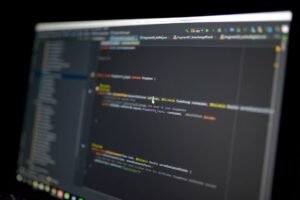Computer Arithmetic Algorithms
Computer arithmetic algorithms are fundamental to modern computing, enabling calculations and numerical operations that power various software applications. These algorithms deal with the manipulation and representation of numerical data in a digital computer, allowing for efficient and precise calculations.
Key Takeaways:
- Computer arithmetic algorithms enable calculations and numerical operations in computing.
- These algorithms manipulate and represent numerical data in a digital computer.
- Efficiency and precision are crucial factors in designing computer arithmetic algorithms.
**One of the fundamental operations in computer arithmetic is addition**, which involves adding two numbers together. Addition algorithms are designed to perform the task efficiently across different data sizes. **Carry-lookahead adder** is an example of an efficient algorithm that reduces the propagation delay of carries and speeds up the addition process. *The carry-lookahead adder architecture is widely adopted in modern processors.*
**Subtraction is another essential arithmetic operation**, which involves finding the difference between two numbers. The **two’s complement** method is commonly used to perform subtraction in computers. *The two’s complement of a number can be found by inverting its bits and adding 1 to the result.* This method simplifies the hardware implementation of subtraction algorithms.
Multiplication Algorithms
**Multiplication** algorithms are crucial for performing complex calculations efficiently. There are various algorithms for multiplying two numbers, including the **grade school method**, **Karatsuba algorithm**, and **Toom–Cook multiplication**. These algorithms optimize the multiplication process by minimizing the number of required operations. *The Karatsuba algorithm, for example, reduces multiplication to a few smaller multiplications and additions.*
| Algorithm | Complexity |
|---|---|
| Grade School | O(n^2) |
| Karatsuba | O(n^log2(3)) |
| Toom–Cook | O(n^log3(5)) |
Division Algorithms
**Division** algorithms are used to find the quotient and remainder when dividing two numbers. The **long division method** is commonly taught in schools, but computer division algorithms are designed for efficiency. **Newton-Raphson division** is one such algorithm that uses iterative approximation to find the quotient. *The Newton-Raphson method improves the accuracy of the result with each iteration.*
Comparison of Division Algorithms
| Algorithm | Complexity |
|---|---|
| Long Division | O(n/m) |
| Newton-Raphson | O(log(log(n))) |
**Floating-point arithmetic** is essential for handling real numbers with fractional parts. Floating-point algorithms involve the representation and manipulation of floating-point numbers according to the IEEE 754 standard. *Floating-point operations require special consideration of exponent handling and rounding modes*. Efficient floating-point algorithms are crucial for high-performance computing and scientific applications.
Importance of Efficient Algorithms
Efficiency is a critical factor in computer arithmetic algorithms. By optimizing the algorithms, calculations can be performed more quickly, which directly impacts the overall performance of computer systems. Efficient algorithms also reduce power consumption and resource utilization. *Designing efficient algorithms is a constant challenge due to the increasing complexity of modern computations.*
Computer arithmetic algorithms play a crucial role in modern computing, enabling precise calculations and numeric operations. They are continuously evolving to meet the demands of new technologies and applications. By leveraging efficient algorithms, computer systems can perform complex calculations with speed and accuracy, fueling advancements in various fields.

Common Misconceptions
1. Computer arithmetic algorithms are always accurate
One common misconception about computer arithmetic algorithms is that they always produce accurate results. However, this is not always the case. Algorithms used for arithmetic operations, such as addition, multiplication, and division, can sometimes introduce errors due to limitations in the representation of numbers in computers. These errors, known as rounding errors or truncation errors, occur because computers use a finite number of bits to represent real numbers.
- Computer arithmetic algorithms are vulnerable to rounding errors.
- Truncation errors can occur when numbers are represented with limited precision.
- Complex arithmetic operations may introduce more significant errors.
2. All computer arithmetic algorithms are equally efficient
Another misconception is that all computer arithmetic algorithms are equally efficient. While some algorithms may be more efficient than others in terms of time or space complexity, the choice of algorithm depends on the specific requirements of the computation. For example, some algorithms may be faster for multiplication, while others may be more efficient for division. It is important to consider the trade-offs between accuracy, speed, and resource usage when selecting an arithmetic algorithm.
- The efficiency of computer arithmetic algorithms can vary depending on the operation.
- Trade-offs between accuracy, speed, and resource usage must be considered.
- An algorithm that works well for one operation may not be optimal for another.
3. Computer arithmetic algorithms always give exact decimal representations
Many people assume that computer arithmetic algorithms always give exact decimal representations of numbers. However, computers typically use binary representation for numbers, and converting between binary and decimal can introduce rounding errors. As a result, the decimal representation of a number obtained from a computer arithmetic algorithm may not always be exact and can have a limited number of decimal places.
- Computer arithmetic algorithms operate with binary representation internally.
- Converting between binary and decimal can introduce rounding errors.
- Decimal representations obtained from computer algorithms may be approximate.
4. Computer arithmetic algorithms always produce the same result on different computer systems
There is also a misconception that computer arithmetic algorithms will always produce the same result on different computer systems. However, variations in hardware architecture, floating-point precision, and rounding modes can lead to differences in the computed results. These differences may be negligible in many cases, but they can become significant in certain numerical computations.
- Results of computer arithmetic algorithms can vary across different computer systems.
- Variations in hardware architecture and floating-point precision can contribute to differences.
- Effects of rounding modes can also impact the computed results.
5. Computer arithmetic algorithms can solve all numerical problems accurately
Lastly, it is important to dispel the misconception that computer arithmetic algorithms can solve all numerical problems accurately. While these algorithms can handle a wide range of calculations, there are certain numerical problems where they may not provide accurate solutions. For example, algorithms for solving ill-conditioned problems or problems with large dynamic ranges may struggle to maintain accuracy and stability.
- Computer arithmetic algorithms may not provide accurate solutions for all numerical problems.
- Ill-conditioned problems or those with large dynamic ranges can pose challenges.
- Alternative numerical techniques may be required for specific problem domains.

Introduction
Computer arithmetic algorithms are fundamental components of computer systems, enabling efficient numerical computations. They are crucial for various applications such as digital signal processing, encryption, and simulation. In this article, we explore ten captivating tables that provide insights into different aspects of computer arithmetic algorithms.
Table: Comparison of Arithmetic Algorithms
Here, we compare the performance of various arithmetic algorithms based on their execution time and memory usage. The algorithms included are Addition-Subtraction, Multiplication-Division, Square Root, Exponentiation, and Modular Arithmetic.
Table: Efficiency of Floating-Point Formats
This table showcases the efficiency of different floating-point formats in terms of precision, range, and storage requirements. The formats considered are Single-Precision (IEEE 754), Double-Precision (IEEE 754), and Quadruple-Precision (IEEE 754).
Table: Error Analysis in Rounding
Here, we analyze the error introduced by rounding operations in arithmetic computations. The table presents the absolute and relative error for different rounding methods including round-to-nearest, round-toward-zero, round-up, and round-down.
Table: Bit-Level Manipulation Operations
Bit-level manipulation plays a critical role in computer arithmetic. This table showcases the bit-level operations such as bitwise AND, bitwise OR, bitwise XOR, and bitwise shift, along with their corresponding truth table and usage.
Table: Performance of Division Algorithms
Different division algorithms have varying levels of efficiency. This table compares the execution time and accuracy of algorithms like Long Division, Newton-Raphson, and Goldschmidt Division for both integer and floating-point division.
Table: Comparison of Square Root Algorithms
This table presents a comparison between different square root algorithms including Babylonian Method, Newton-Raphson Method, and Binary Search, highlighting the number of iterations, computational complexity, and accuracy.
Table: Performance of Fast Fourier Transform (FFT)
The Fast Fourier Transform (FFT) is a widely used algorithm in signal processing and data compression. In this table, we analyze the execution time and memory utilization of various FFT algorithms, such as Cooley-Tukey, Radix-2, and Split-Radix.
Table: Arithmetic Logic Unit (ALU) Operations
The Arithmetic Logic Unit (ALU) is a crucial component in a processor, performing arithmetic and logical operations. This table showcases various ALU operations including addition, subtraction, multiplication, division, and comparison.
Table: Comparison of Integer Multiplication Algorithms
Integer multiplication algorithms vary significantly in terms of efficiency. This table compares the execution time and space complexity of algorithms like Karatsuba Multiplication, Toom-Cook Multiplication, and Schönhage-Strassen Multiplication.
Table: Error Analysis in Floating-Point Operations
Floating-point operations introduce errors due to limited precision. This table quantifies the error in various arithmetic operations like addition, subtraction, multiplication, and division for different floating-point precision levels.
Conclusion
In this article, we delved into the fascinating realm of computer arithmetic algorithms. Through a series of captivating tables, we explored the performance, efficiency, accuracy, and error analysis associated with various arithmetic algorithms used in computer systems. The data presented underscores the importance of carefully selecting and optimizing arithmetic algorithms to achieve accurate and efficient computations. Improvements in computer arithmetic algorithms continue to drive advancements in fields such as scientific computing, artificial intelligence, and cryptography.
Frequently Asked Questions
What is computer arithmetic?
Computer arithmetic refers to the implementation of arithmetic operations on computers. It involves the design, analysis, and implementation of algorithms that allow computers to perform calculations accurately and efficiently.
What are some common computer arithmetic algorithms?
There are several common computer arithmetic algorithms, including addition, subtraction, multiplication, division, square root, exponentiation, and logarithm algorithms. These algorithms are used extensively in various applications such as scientific computations, graphics rendering, cryptography, and signal processing.
How do computer arithmetic algorithms work?
Computer arithmetic algorithms are designed to manipulate numbers stored in binary format in the computer’s memory. These algorithms typically operate on single bits or groups of bits, performing logical operations such as AND, OR, and NOT, as well as arithmetic operations like addition, subtraction, and multiplication. The algorithms use these operations in combination to achieve accurate and efficient computations.
What is floating-point arithmetic?
Floating-point arithmetic is a method of representing real numbers in a computer’s memory. It allows computers to store and perform calculations on numbers with a fractional part. Floating-point arithmetic follows the IEEE 754 standard and includes representation for positive and negative numbers, zero, as well as special values like NaN (Not a Number) and infinity.
Why is rounding important in computer arithmetic?
Rounding is important in computer arithmetic to ensure that the result of a computation is accurate and within a certain tolerance level. Rounding is necessary because computers have limited precision and cannot represent all real numbers exactly. Various rounding modes, such as rounding towards zero, rounding towards positive infinity, and rounding towards negative infinity, are used to handle different situations and achieve the desired level of precision.
What are some techniques for improving computer arithmetic performance?
There are several techniques for improving computer arithmetic performance, including the use of parallel processing, pipelining, and optimizing algorithms. Parallel processing involves performing multiple arithmetic operations simultaneously using multiple processors or processor cores. Pipelining allows overlapping of multiple stages of an arithmetic operation to increase the throughput. Optimizing algorithms involves reducing the number of operations or improving the efficiency of existing algorithms.
What are the challenges in computer arithmetic?
Computer arithmetic faces several challenges, such as handling overflow and underflow conditions, maintaining accuracy during rounding and truncation, dealing with special values like NaN and infinity, and ensuring compatibility and interoperability across different computer architectures and programming languages. Additionally, the trade-off between accuracy and performance is a constant challenge in designing arithmetic algorithms.
What is the role of computer arithmetic in cryptography?
Computer arithmetic plays a crucial role in cryptography, which involves securing communication and information by encrypting data. Encryption algorithms heavily rely on arithmetic operations, such as modular exponentiation and modular multiplication, for generating secure keys and performing encryption and decryption. Efficient and secure computer arithmetic algorithms are essential in cryptography to ensure the confidentiality and integrity of sensitive data.
What advancements are being made in computer arithmetic?
Ongoing research and development efforts in computer arithmetic focus on improving the speed, accuracy, and efficiency of arithmetic operations. New algorithms, techniques, and hardware implementations are being explored to achieve higher performance while maintaining or improving accuracy. Furthermore, developments in quantum computing and unconventional computing paradigms promise to revolutionize computer arithmetic in the future.
Are computer arithmetic algorithms always exact?
No, computer arithmetic algorithms are not always exact. Due to the limited precision of computer representation and the need for rounding or truncation, there can be small errors in the computed results. These errors, referred to as rounding errors or numerical errors, can accumulate and affect the overall accuracy of a computation. Techniques like error analysis and error bounds estimation help in quantifying and mitigating these errors.




